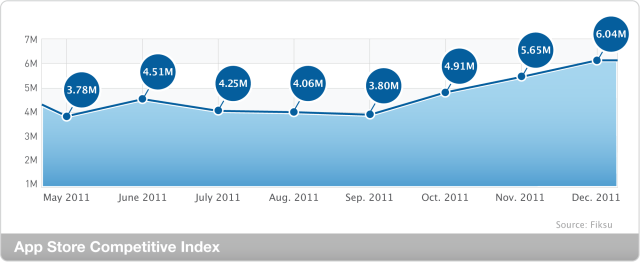As everyone waits for Facebook to file for its IPO this week, one of the big questions is what will its valuation be. Will it hit the magic $100 billion?
Well, we are not going to find out this week because IPOs don’t get priced unti right before the offering, which isn’t expected until April or May. And a lot can happen between now and then. (What will be filed is the preliminary S-1 with all of Facebook’s financials and other corporate information).
But if Facebook went public today, chances are that it would get a valuation of around $85 billion. We know this because there is a pretty good proxy. Facebook shares trade on provate markets like Sharespost and SecondMarket. In fact, there is an auction going on right now on Sharespost for a block of Facebook shares which ends on February 2 (the same day the filing is expected to hit). The last contract was yesterday at $35.50, which gives Facebook an implied valuation of $83.5 billion. The last auction on Sharespost closed at a “clearing price” of $34 on January 20, which gave it an implied valuation of $80 billion.
Sharespost is an illiquid market with limited supply, so this is a very loose proxy. But it sets an important benchmark.
Another benchmark to look at is other social networking stocks that are already trading publicly, most importantly Zynga and LinkedIn. Both fell after their IPOs, but have been rallying so far this year ahead of earnings. (Zynga is finally above its $10 IPO price). Who knows where they will be in April or May, but a bull market for those stocks will mean a higher valuation for Facebook at its IPO. If they tank again, then Facebook’s valuation could also come under pressure.
If $85 billion sounds familiar, that is because that is where Facebook was trading on the private markets almost a year ago. Valuations kept going up after that, helping LinkedIn and other Internet companies go public. Then all the IPOs sank, and now they are climbing back.
For public investors who believe that Facebook will be the next great tech stock, a lower valuation at the IPO will be better. Whether it is $85 billion or $100 billion, a huge chunk of Facebook’s valuearguably has already been captured by private investors. Even if Facebook is eventually worth more than Apple’s current $422 billion market cap, that would only be a 4X to 5X return on an IPO over time, depending on where it starts. For context, Amazon has returned more than 125X on IPO investors.

Source:http://techcrunch.com/2012/01/30/facebook-84-billion-valuation/
Well, we are not going to find out this week because IPOs don’t get priced unti right before the offering, which isn’t expected until April or May. And a lot can happen between now and then. (What will be filed is the preliminary S-1 with all of Facebook’s financials and other corporate information).
But if Facebook went public today, chances are that it would get a valuation of around $85 billion. We know this because there is a pretty good proxy. Facebook shares trade on provate markets like Sharespost and SecondMarket. In fact, there is an auction going on right now on Sharespost for a block of Facebook shares which ends on February 2 (the same day the filing is expected to hit). The last contract was yesterday at $35.50, which gives Facebook an implied valuation of $83.5 billion. The last auction on Sharespost closed at a “clearing price” of $34 on January 20, which gave it an implied valuation of $80 billion.
Sharespost is an illiquid market with limited supply, so this is a very loose proxy. But it sets an important benchmark.
Another benchmark to look at is other social networking stocks that are already trading publicly, most importantly Zynga and LinkedIn. Both fell after their IPOs, but have been rallying so far this year ahead of earnings. (Zynga is finally above its $10 IPO price). Who knows where they will be in April or May, but a bull market for those stocks will mean a higher valuation for Facebook at its IPO. If they tank again, then Facebook’s valuation could also come under pressure.
If $85 billion sounds familiar, that is because that is where Facebook was trading on the private markets almost a year ago. Valuations kept going up after that, helping LinkedIn and other Internet companies go public. Then all the IPOs sank, and now they are climbing back.
For public investors who believe that Facebook will be the next great tech stock, a lower valuation at the IPO will be better. Whether it is $85 billion or $100 billion, a huge chunk of Facebook’s valuearguably has already been captured by private investors. Even if Facebook is eventually worth more than Apple’s current $422 billion market cap, that would only be a 4X to 5X return on an IPO over time, depending on where it starts. For context, Amazon has returned more than 125X on IPO investors.

Source:http://techcrunch.com/2012/01/30/facebook-84-billion-valuation/





























 Way back in 2009 there was no large event dedicated to technology startups in the UK. TechCrunch, under Mike Arrington, was busy trying to get its TechCrunch50/Disrupt programme going in the US, and outside of local meetups, the TC event juggernaut still had yet to arrive in Europe. My friend and colleague Robin Wauters was doingPlugg in Brussels, but there wasn’t a startup event in London. So I launched a personal project, an event I called GeeknRolla, the name for which I literally dreamt up in a London pub. Despite those amateurish beginnings, about 400 people turned up that year, and I ran it again for the next couple of years as a fun side project. But times move on and after running it single-handedly for three years in a row, I’m going to bring the GeeknRolla “mojo” to a new event (while we wait for the TC event machine to spin up in Europe, and more on that later so stay tuned).
Way back in 2009 there was no large event dedicated to technology startups in the UK. TechCrunch, under Mike Arrington, was busy trying to get its TechCrunch50/Disrupt programme going in the US, and outside of local meetups, the TC event juggernaut still had yet to arrive in Europe. My friend and colleague Robin Wauters was doingPlugg in Brussels, but there wasn’t a startup event in London. So I launched a personal project, an event I called GeeknRolla, the name for which I literally dreamt up in a London pub. Despite those amateurish beginnings, about 400 people turned up that year, and I ran it again for the next couple of years as a fun side project. But times move on and after running it single-handedly for three years in a row, I’m going to bring the GeeknRolla “mojo” to a new event (while we wait for the TC event machine to spin up in Europe, and more on that later so stay tuned).






